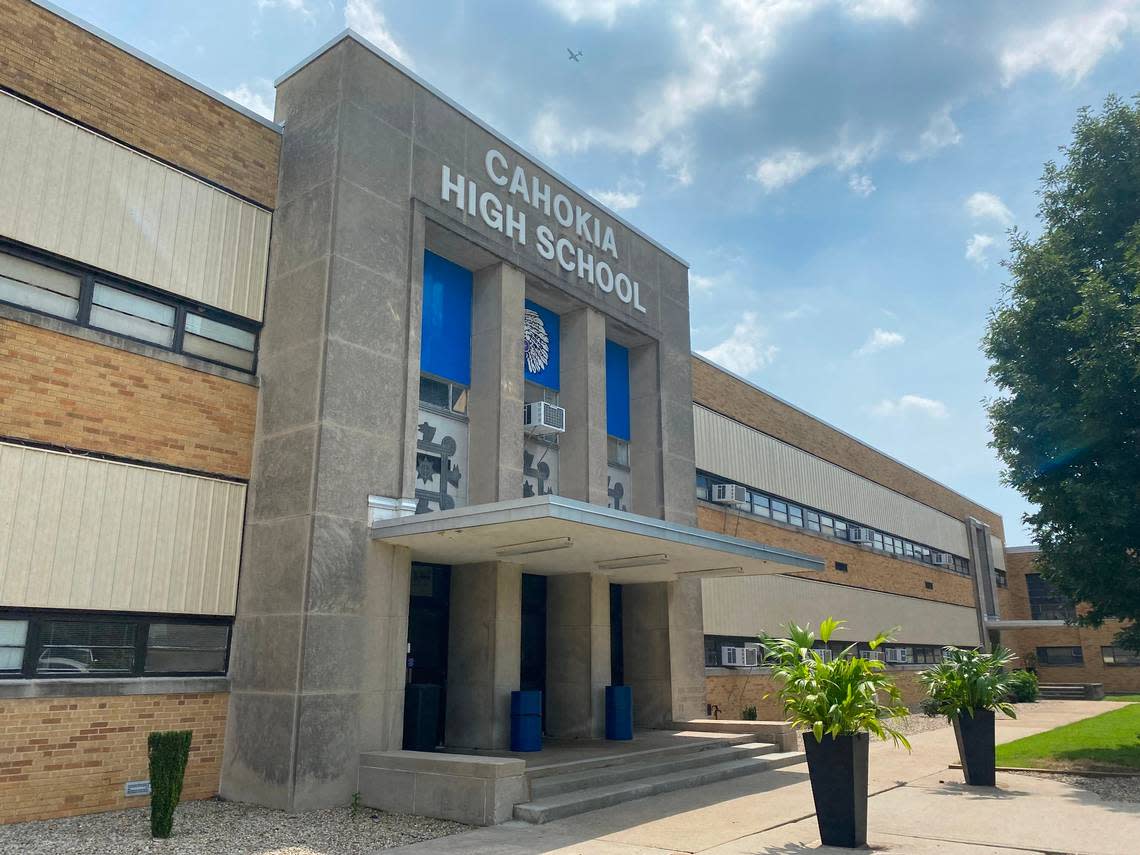Cahokia moves forward with funding for new high school. How will the district pay for it?

Cahokia Community Unit School District 187 is taking an alternative route to securing funding for a new high school that doesn’t require putting a bond referendum on a ballot.
On Monday, the district’s board held a public hearing on the issuance of $139 million in debt, $89 million of which is through general obligation lease certificates that will go to the construction of a replacement for the existing 71-year-old school at 800 Range Lane.
“It’s been a long time coming but the district is so much closer now to finally building a high school that has been desired in the community for so long,” Assistant Superintendent Arnett Harvey said during the hearing.
In addition to the $89 million in lease certificates, the district will rely on about $30 million in the district’s working cash fund from bonds it sold in 2020 and about $20 million of freed-up reserves from the third wave of federal Covid-19 funding that will supplant salaries to fund the new school.
The district hopes to have sufficient funds to break ground on a new high school next spring and for the building to be ready for move-in by the fall of 2026, Harvey said in an interview after the hearing.
The other debt included in Monday’s hearing was $25 million in working cash bonds and $25 million in funding bonds.
No members of the board or the public provided any comments during the hearing on the issuance of the lease certificates and bonds.
During the Aug. 14 board meeting, the board adopted resolutions to authorize the issuance of the lease certificates and declare its intention to issue the working cash and funding bonds. It then posted public notices for Monday’s hearing as well as its intent to issue the general obligation lease certificates, working cash bonds and funding bonds on Aug. 20.
Now that the hearing has been completed, the district will market the lease certificates and bonds to investors to get the most favorable terms possible, Harvey said.
“What that takes is the forensic discussion about the board’s wherewithal to repay debt and the community’s wherewithal to assist in that process as it’s necessary, without putting an excessive burden on the community,” he said.
After the district sells the bonds, the board would then work with architects, building designers and builders to continue the anticipated three-year project.
Harvey said the idea is that the district won’t have to spend all of that money but will have enough funds on hand to be able to complete the project once it’s started. He said the district also wants to be sure to build a facility that meets both its current and future needs from a growth standpoint.
The district tried twice to pass bond referendums — $50 million in 2011 and $32 million in 2012 — to build and equip a new high school.
The board also considered a referendum in the early to mid 2000s, Harvey said, but it didn’t make it to the ballot.
What are lease certificates and bonds?
Lease certificates, like bonds, are a form of long-term debt a district can use to raise money for capital projects like building a new school.
As with bonds, a school district issues and sells the lease certificates and then pays back the principal amount plus interest over a set number of years.
The difference between general obligation lease certificates and bonds is how they’re repaid.
General obligation bond debt requires approval of a district’s voters if there is an accompanying tax. It is then paid for out of a debt service fund.
General obligation lease certificate debt can be paid from the district’s general operating funds, which include the education, operation and maintenance, transportation and working cash funds.
Cahokia 187 has been building up its education and working cash fund balances. According to the 2024 fiscal year budget, which the board adopted at Monday’s meeting, the district estimates it will have about $63.6 million between its education and working cash funds at the end of the fiscal year on June 30, 2024.
“It’s seen its better days”
Cahokia High School was built in the late 1940s and established in 1952.
“Needless to say, over those years of usage, with the number of students who’ve been in the building and just useful life of a building, it’s seen its better days,” Harvey said.
While the school has more than $30 million in health and life safety repairs in the building now, none of the concerns have required the school to shut down, Harvey said, “but surely they hamper our students’ educational needs. And sometimes the safety issues are there if you’ve got roofing problems, if you have water leak problems, that sort of thing.”
He said the district was approved for funding from the Capital Development Board in 2004, but the state of Illinois didn’t have funding at the time to support approved projects.

